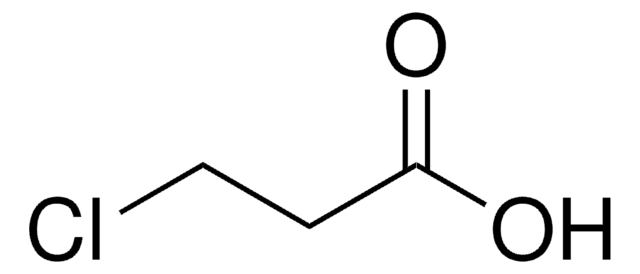All Photos(3)
About This Item
Linear Formula:
C6H5CONHCH3
CAS Number:
Molecular Weight:
135.16
EC Number:
MDL number:
UNSPSC Code:
12352100
PubChem Substance ID:
NACRES:
NA.22
Recommended Products
Assay
≥99%
form
solid
bp
167 °C/11 mmHg (lit.)
mp
76-78 °C (lit.)
solubility
ethanol: soluble 50 mg/mL, clear, yellow-green
SMILES string
CNC(=O)c1ccccc1
InChI
1S/C8H9NO/c1-9-8(10)7-5-3-2-4-6-7/h2-6H,1H3,(H,9,10)
InChI key
NCCHARWOCKOHIH-UHFFFAOYSA-N
General description
N-Methylbenzamide is a potent PDE10A (phosphodiesterase with a remarkable localization as the protein is abundant only in brain tissue) inhibitor.
Certificates of Analysis (COA)
Search for Certificates of Analysis (COA) by entering the products Lot/Batch Number. Lot and Batch Numbers can be found on a product’s label following the words ‘Lot’ or ‘Batch’.
Already Own This Product?
Find documentation for the products that you have recently purchased in the Document Library.
Customers Also Viewed
John Paul Kilburn et al.
Bioorganic & medicinal chemistry, 21(19), 6053-6062 (2013-08-28)
PDE10A is a recently identified phosphodiesterase with a quite remarkable localization since the protein is abundant only in brain tissue. Based on this unique localization, research has focused extensively on using PDE10A modulators as a novel therapeutic approach for dysfunction
H van de Waterbeemd et al.
Journal of medicinal chemistry, 29(5), 600-606 (1986-05-01)
The electronic properties of orthopramides, a group of selective D-2 dopamine receptor antagonists, were investigated by calculating molecular electrostatic potentials (MEP) of model compounds with the ab initio STO-3G MO method. The various substitution patterns of the aromatic ring are
Atsushi Satoh et al.
Bioorganic & medicinal chemistry letters, 19(18), 5464-5468 (2009-08-14)
We identified 4-fluoro-N-[4-[6-(isopropylamino)pyrimidin-4-yl]-1,3-thiazol-2-yl]-N-methylbenzamide 27 as a potent mGluR1 antagonist. The compound possessed excellent subtype selectivity and good PK profile in rats. It also demonstrated relatively potent antipsychotic-like effects in several animal models. Suitable for development as a PET tracer, compound
L Constantino et al.
Biochemical pharmacology, 44(4), 651-658 (1992-08-18)
The metabolism of N,N-dimethylbenzamides by phenobarbital-induced rat liver microsomes results in the formation of N-methylbenzamides and formaldehyde. The reaction proceeds via the formation of an intermediate N-hydroxymethyl-N-methylbenzamide, which, for the microsomal oxidation of N,N-dimethylbenzamide, was isolated and characterized. Confirmation of
Shih-Chung Huang et al.
Bioorganic & medicinal chemistry letters, 14(18), 4779-4782 (2004-08-25)
A series of N-methylbenzamide analogues (2-18) that is structurally derived from SR 48,968, a potent neurokinin-2 (NK(2)) receptor antagonist (pK(b)9.1), has been obtained using asymmetric synthesis. Isothiocyanato-N-methylbenzamide (10-12) and bromoacetamido-N-methylbenzamide derivatives (16-18) have been designed to serve as potential electrophilic
Our team of scientists has experience in all areas of research including Life Science, Material Science, Chemical Synthesis, Chromatography, Analytical and many others.
Contact Technical Service














